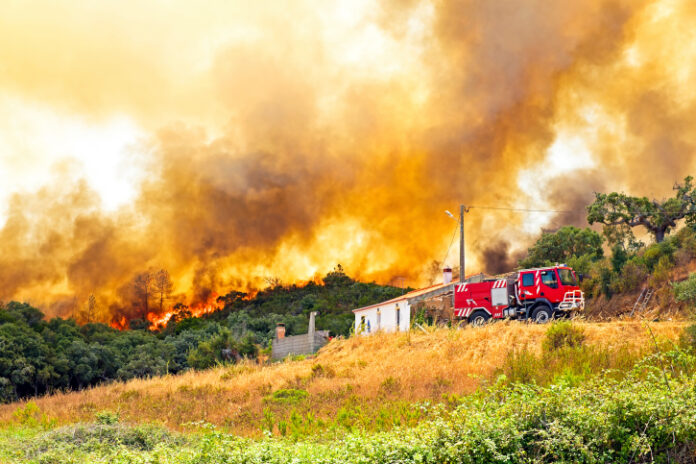California regulators approved a plan for Pacific Gas & Electric (PG&E) to spend up to $170 million on diesel-powered generators to keep electricity flowing during anticipated preemptive blackouts in the 2020 wildfire season.
The plan, approved by the California Public Utilities Commission (CPUC) on June 11, allows PG&E to use about 450 megawatts of diesel-powered electricity to power homes, businesses, medical facilities, and other essential places in the event of a wildfire.
CPUC determined PG&E’s use of diesel generators for backup power was the option most likely to avoid a repeat of the electric power blackouts used by PG&E in 2018 and 2019 to reduce the threat of wildfires.
Fossil Fuel Power Needed
PG&E plans to install generators at 63 locations in fire-prone counties, to be activated during dangerous wildfire weather when transformers are turned off to prevent them from sparking wildfires. The power company also plans to install temporary electric microgrids, which operate independently of the main power grid, to provide electricity to streetlights, hospitals, police stations, and stores.
“Our specific objective with the development of temporary microgrids is to provide electricity to resources such as medical facilities and pharmacies, police and fire stations, gas stations, banks, markets, and other shared community services when weather conditions make it unsafe to operate the grid,” Debbie Powell, vice president of PG&E’s Asset & Risk Management, Community Wildfire Safety Program said in a statement.
Clean-Energy Opposition
Dozens of residents and members of environmental groups argued against PG&E’s proposals in a virtual hearing held by CPUC. Opponents said the plan would undermine California’s goal of ending the use of fossil fuels by 2045 and the use of the diesel generators would produce unwanted noise and air pollution in local communities.
“We should not be using the same technologies which got us into this mess and causing these wildfires,” Harlow Pittinger of Sunrise Movement told Courthouse News.
PG&E said it considered non-fossil fuel power generation options but concluded they would be impractical to implement in time to provide power during this year’s wildfire season. CPUC agreed with PG&E’s assessment.
To reduce emissions, the company said its mobile generators can use some amount of vegetable oil-based fuel. PG&E is working with communities to develop microgrids powered by renewable power sources located in the areas where power is needed on an emergency basis in future years to replace the fossil fuel dependent microgrids being brought online this year.
CPUC approved PG&E’s plan for 2020, determining the choice was between Californians suffering through potential preventable blackouts during this fire season, as they have in recent years when power was shut down and no backup was available, or the use of fossil fuel powered generators.
CPUC directed PG&E to find cleaner alternatives to use after 2020.
Emma Kaden (EKaden@heartland.org) is an assistant editor at The Heartland Institute.


























